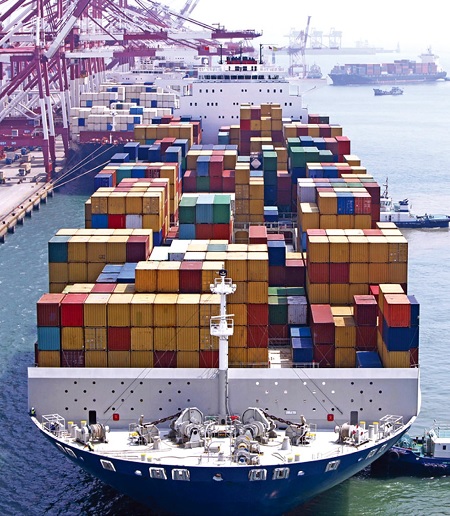Trade surplus increases, while manufacturing slows down
By Morgan Brady
 在刚刚过去的6月,我国各项经济指标表现不一,这从侧面表明我国整体经济压力逐渐增大。6月份,我国对外贸易情况有所改善,进口额增长率仅为14.1%,低于预期的 20.8%。与此同时,出口额小幅上升,增长了11.3%。贸易顺差难能可贵,毕竟现在是美国总统特朗普对我国开始施行贸易保护主义,增收关税之际。即便如此,我国仍然在6月份实现了对美出口290亿美元的高出口额。早前我国通过对美国商品征收25%的关税来回应美国对我国价值高达340亿美元的出口产品征收关税的政策。但是随着中美两大经济体之间的贸易战升级,我国出口贸易恐将遭受更大影响。
在刚刚过去的6月,我国各项经济指标表现不一,这从侧面表明我国整体经济压力逐渐增大。6月份,我国对外贸易情况有所改善,进口额增长率仅为14.1%,低于预期的 20.8%。与此同时,出口额小幅上升,增长了11.3%。贸易顺差难能可贵,毕竟现在是美国总统特朗普对我国开始施行贸易保护主义,增收关税之际。即便如此,我国仍然在6月份实现了对美出口290亿美元的高出口额。早前我国通过对美国商品征收25%的关税来回应美国对我国价值高达340亿美元的出口产品征收关税的政策。但是随着中美两大经济体之间的贸易战升级,我国出口贸易恐将遭受更大影响。
在外汇储备方面,随着6月贸易顺差的增长,外汇储备也相应增长。根据我国人民银行数据显示,6月份外汇储备增加了15.1亿美元,总额高达3.1万亿美元,其增长背后的关键因素是我国国债持有量的增加。
与此同时,受中美贸易争端紧张局势的影响,我国制造业在6月份放缓,采购经理人指数(PMI)在6月下降至51.5,低于预期的51.6。其中,生产分项指数从54.1降至53.6,新订单分项指数从5月的53.8降至53.2。信贷、投资和零售销售等数据增长速度同样放缓。
总体来看,目前我国经济压力逐步增大。虽然外贸数据相对乐观,但其他经济指数的放缓和下降都表明经济压力已然增大。此时,我国注重刺激中小企业发展的策略非常明智,因为这些企业可以拉动内需,创造就业机会并增加经济收入,从而在整体上分担一些压力。
China’s economic performance indicators were mixed in the month of June, but they show that the pressures are mounting on the economy.
Foreign Trade
Conditions of China’s foreign trade improved in June as reports showed a $41.61 billion surplus. Imports were below expectations as they grew by only 14.1 percent in comparison with expectations of growth at 20.8 percent. At the same time, exports ticked slightly to the upside above expectations, as they grew by 11.3 percent.
This comes at a time when the Chinese economy is being affected by protectionism efforts launched by Mr. Trump, as he struck off a list of Chinese goods that were subject to 10% tariffs upon entering the United States. The value of those goods amounts to $200 billion.
At earlier times, China responded to initial tariffs by the US on Chinese products worth $34 billion by imposing similar tariffs of 25% on American goods. But even with those reciprocal measures, China still managed to achieve a record high surplus of $29 billion with the US in June.
As the trade war between the two biggest economies in the world escalates, the impact on Chinese trade data can become larger, especially because the US is the largest importer from China. It remains uncertain how the situation will develop over the upcoming months.
Foreign Reserves
As trade surplus grew in June, so did foreign reserves. According to the People’s Bank of China, foreign reserves stood at $3.1 trillion. The key factor behind this rise was the increase in the value of China’s treasury holdings especially since US bonds are a major holding by China’s Central Bank.
June numbers came very positive in comparison with those of May. In June, foreign reserves rose by $1.51 billion, whereas in May they had dropped by $14.23 trillion.
Factory Growth
On a less upbeat note, the manufacturing sector slowed down in June, driven by the pessimistic sentiment due to trade war tensions. The purchasing managers’ index (PMI), which measures the pulse of the manufacturing industry, declined to 51.5 (below expectation of 51.6) in June, below its level in May at 51.9. The PMI still showed an expansion (albeit at a lower pace), given that it was still above the 50 expansion/contraction threshold.
Companies of different sizes diverged in their performance. For large-size firms, the PMI showed a reading of 52.9, declining from 53.1. For medium-size firms, the index showed a reading of 49.9 from 51.0, whereas the index for small firms increased to 49.8 from 49.6.
One of the components of the index, the new export orders index, showed a contraction as it printed a reading of 49.8, compared with a 51.2 reading in May. A production sub-index declined to 53.6 from 54.1, and a new orders sub-index dropped to 53.2 from 53.8 in May.
Other data, such as the one on credit growth, investment, and retail sales pointed in the same direction, indicating growth at a slower pace. This follows a crackdown on corporate borrowing by Chinese authorities to reduce risk, as well as a decrease in reserve requirements for banks.
Trade tensions had weakened domestic demand, as capital is flowing in the direction of safer investments, such as US government bonds, and away from risky activities. Chinese authorities continue to reduce banks’ reserve requirements ratio (RRR) to offset the effects of economic slowdown and stimulate the economy. The central bank is aiming to induce growth in small-size firms and intends to cut the RRR by 50 basis points for some banks, in order to increase the rate of debt-to-equity swaps and increase lending to small-size firms, who are usually considered an important pillar in spurring economic growth.
Moreover, Chinese authorities are cracking down on capital outflows and setting restrictions on investments abroad, in order to prevent massive capital flight from the country which would reflect negatively on growth.
Conclusion
Pressures on the Chinese economy are mounting. Although foreign trade data showed a record high surplus with the US, China’s biggest trade partner, there are signs elsewhere that show that the economy is feeling the pinch. Among those are: growth at a slower pace in the manufacturing sector, retail sales, and credit growth data. China’s exposure to US government bonds proved to be positive as those treasury holdings by China’s central bank increased the value of its foreign reserves. This exposure was especially good given the recent depreciation in the Chinese Yuan against the US dollar. In addition, China’s focus on spurring growth in small-size firms is a wise approach, given that those companies generate jobs and increase disposable income in the economy, and thus reduce some of the pressures.
Despite trade war tensions and the pressures, China is likely to achieve commendable growth this year, especially when considering the performance of previous months such as May. This is due to astute regulations and economic policy. In the grand scheme of things, the trade war may prove to be a small blow to a rising dragon.